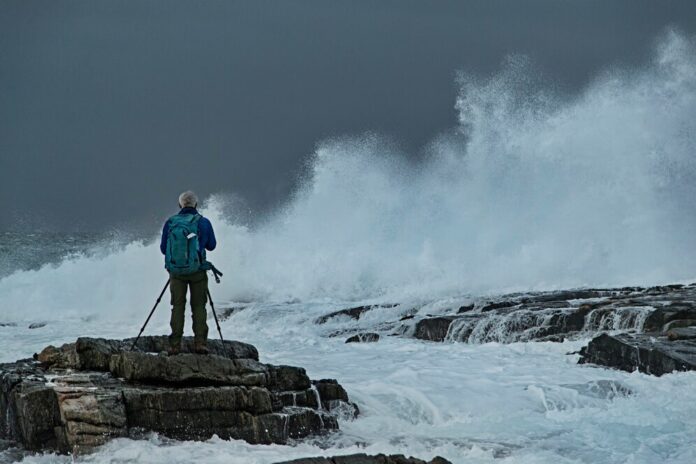Mammoth weather can change quickly, so it’s important to be prepared when you visit. This beautiful mountain town is known for its stunning views and outdoor activities, but understanding the weather is key to having fun. Whether you’re skiing, hiking, or just enjoying the scenery, knowing what to expect from the weather can help you plan your day.
In winter, Mammoth weather brings lots of snow, making it perfect for skiing and snowboarding. But be ready for cold temperatures! In summer, the weather can be warm and sunny, ideal for hiking and biking. Knowing the weather forecast helps you pack the right clothes and stay safe while enjoying everything Mammoth has to offer.
Understanding Mammoth Weather Patterns
Mammoth weather changes with the seasons. Winter usually lasts from December to March. It brings heavy snowfall, attracting many winter sports lovers. The snow can make the town look like a winter wonderland. The temperatures can drop below freezing, so it is essential to dress in layers to keep warm.
During spring, the snow starts to melt, and the weather becomes milder. You can enjoy both skiing and hiking during this time. Spring is a great season for people who love the outdoors but want to avoid the heavy winter crowds. Watching the flowers bloom while enjoying the fresh air is a treat!
- Winter: Snow, cold temperatures, winter sports.
- Spring: Mild weather, melting snow, blooming flowers.
Preparing for Snow: Tips for Winter Mammoth Weather
When visiting Mammoth during winter, you should prepare for snow. Always check the weather before your trip. This will help you plan your activities and pack the right gear. Make sure to have waterproof boots and warm jackets. It’s also a good idea to bring extra socks and gloves, just in case!
If you are new to skiing or snowboarding, consider taking a lesson. Many ski schools offer classes for beginners. They will teach you the basics and keep you safe on the slopes. Also, remember to hydrate! Drinking water is essential, even in the cold.
- Dress in layers: Wear thermal underwear, a warm jacket, and waterproof pants.
- Stay safe: Follow safety rules on the slopes and take breaks when needed.
Top Activities to Enjoy During Different Mammoth Weather

Mammoth weather offers different activities throughout the year. In winter, skiing and snowboarding are the most popular. Many people come to enjoy the slopes and breathtaking views. Snowshoeing and snowmobiling are also fun ways to explore the winter landscape.
In summer, the weather is warm and perfect for hiking and biking. The Mammoth Lakes area has many trails for all skill levels. You can explore beautiful lakes, meadows, and forests. Don’t forget to bring a picnic! Enjoying a meal outdoors is a great way to relax and appreciate nature.
- Winter activities: Skiing, snowboarding, snowshoeing.
- Summer activities: Hiking, biking, picnicking.
How to Dress for Different Mammoth Weather Conditions
Knowing how to dress for Mammoth weather is very important. In winter, wear warm, layered clothing. Start with a base layer made of thermal fabric. Then, add a warm sweater or fleece. Finally, wear a waterproof jacket to protect against snow and rain.
In summer, the weather can be warm during the day but cooler at night. Wear light, breathable clothing for daytime activities. But don’t forget to bring a light jacket or sweater for the evening. Comfortable shoes are a must for hiking or walking around the town.
- Winter dress code:
- Layered clothing
- Warm hats and gloves
- Summer dress code:
- Light clothing for warmth
- Comfortable shoes for hiking
Weather Safety Tips for Your Mammoth Getaway
Staying safe during your trip to Mammoth is crucial. Always check the weather forecast before going out. If there is a storm warning, consider staying indoors. Snow can cause poor visibility and slippery roads.
Also, know the signs of altitude sickness, as Mammoth is at a high elevation. Symptoms include headache, dizziness, and nausea. If you feel unwell, take it easy and drink plenty of water.
- Safety tips:
- Stay updated with the weather forecast.
- Be aware of altitude sickness symptoms.
Seasonal Changes: What to Expect in Mammoth Weather
Mammoth weather is known for its distinct seasonal changes, each offering unique experiences. As winter approaches, the town transforms into a snowy paradise. The snow usually starts to fall in late November and continues through March. With this heavy snowfall, the ski resorts come alive with visitors eager to enjoy the slopes. Snow-covered mountains and crisp air create the perfect environment for winter sports enthusiasts.
Winter temperatures can often dip below freezing, making it vital to dress warmly. Layering is essential. Start with thermal underwear, add a warm fleece or sweater, and finish with a waterproof outer layer. Accessories like hats, gloves, and scarves are also important to keep extremities warm and protected from the cold winds. You might even want to consider face coverings, as they can help shield against frostbite on very cold days.
As winter fades into spring, Mammoth weather begins to shift. Snow starts to melt, revealing lush landscapes. This transition usually occurs around late March to April. During spring, the weather can be unpredictable, with sunny days followed by sudden snowstorms. It’s not unusual to experience a mix of rain, snow, and sunshine all in one day!
This time of year is ideal for outdoor activities. You can ski in the morning and hike in the afternoon. The melting snow fills the lakes, making them perfect for fishing and kayaking. Spring is also a beautiful time to witness wildflowers blooming. Many trails become accessible again, allowing for fantastic hiking opportunities with stunning views of the mountains and blooming flora.
- Spring highlights:
- Mix of snow and sunny days
- Great for skiing and hiking
- Blooming wildflowers and accessible trails
Local Insights: How Residents Adapt to Mammoth Weather

Living in Mammoth means adjusting to various weather conditions throughout the year. Local residents know how to prepare for each season. In winter, they stock up on supplies before major snowstorms. Keeping extra food, fuel, and other essentials helps them stay comfortable and safe during heavy snowfall.
Many locals also have special vehicles equipped for winter driving. Trucks and SUVs with all-wheel drive are common, as they handle snowy roads much better than regular cars. Residents know to keep their cars equipped with snow tires and always have chains ready, especially for mountain passes.
In summer, Mammoth weather is warm, and locals love to spend time outdoors. They take advantage of the beautiful trails, lakes, and parks. Residents often organize community events, such as outdoor concerts and farmers’ markets, where visitors can join in the fun.
Moreover, locals are aware of the dangers of altitude sickness. They encourage newcomers to take their time adjusting to the higher elevation. Drinking plenty of water and avoiding strenuous activities on the first day helps many newcomers acclimate to the mountain environment.
- Tips from locals:
- Stock up on supplies before winter storms.
- Use appropriate vehicles for snowy conditions.
- Stay hydrated to prevent altitude sickness.
Conclusion
In conclusion, understanding Mammoth weather is important for having a great time in this beautiful place. Whether you visit in winter or summer, knowing what to expect helps you plan your activities. You can enjoy skiing in the snow or hiking in the sun, depending on the season. Being prepared means you can have fun and stay safe!
So, before you go to Mammoth, check the weather forecast. Dress right for the conditions and be ready for any changes. With a little preparation, you will have a fantastic adventure in Mammoth. Remember, each season brings something special, so enjoy every moment of your trip!
FAQs
Q: What is the best time to visit Mammoth?
A: The best time to visit Mammoth depends on what you want to do. For skiing, winter (December to March) is ideal. For hiking and biking, summer (June to August) is perfect.
Q: Does it snow a lot in Mammoth?
A: Yes, Mammoth usually gets a lot of snow in winter. It can receive over 400 inches of snow each season, making it a popular spot for winter sports.
Q: How cold does it get in Mammoth during winter?
A: In winter, temperatures can drop below freezing. Daytime highs are often in the 30s°F, while nighttime lows can be in the teens°F.
Q: Is altitude sickness common in Mammoth?
A: Yes, altitude sickness can happen in Mammoth because it is at a high elevation. Drinking plenty of water and taking it easy on the first day can help.
Q: Can I hike in Mammoth during spring?
A: Yes! Spring is a great time to hike in Mammoth. Just be prepared for changing weather, including snow and sunshine. Some trails may be muddy, so wear appropriate shoes.

